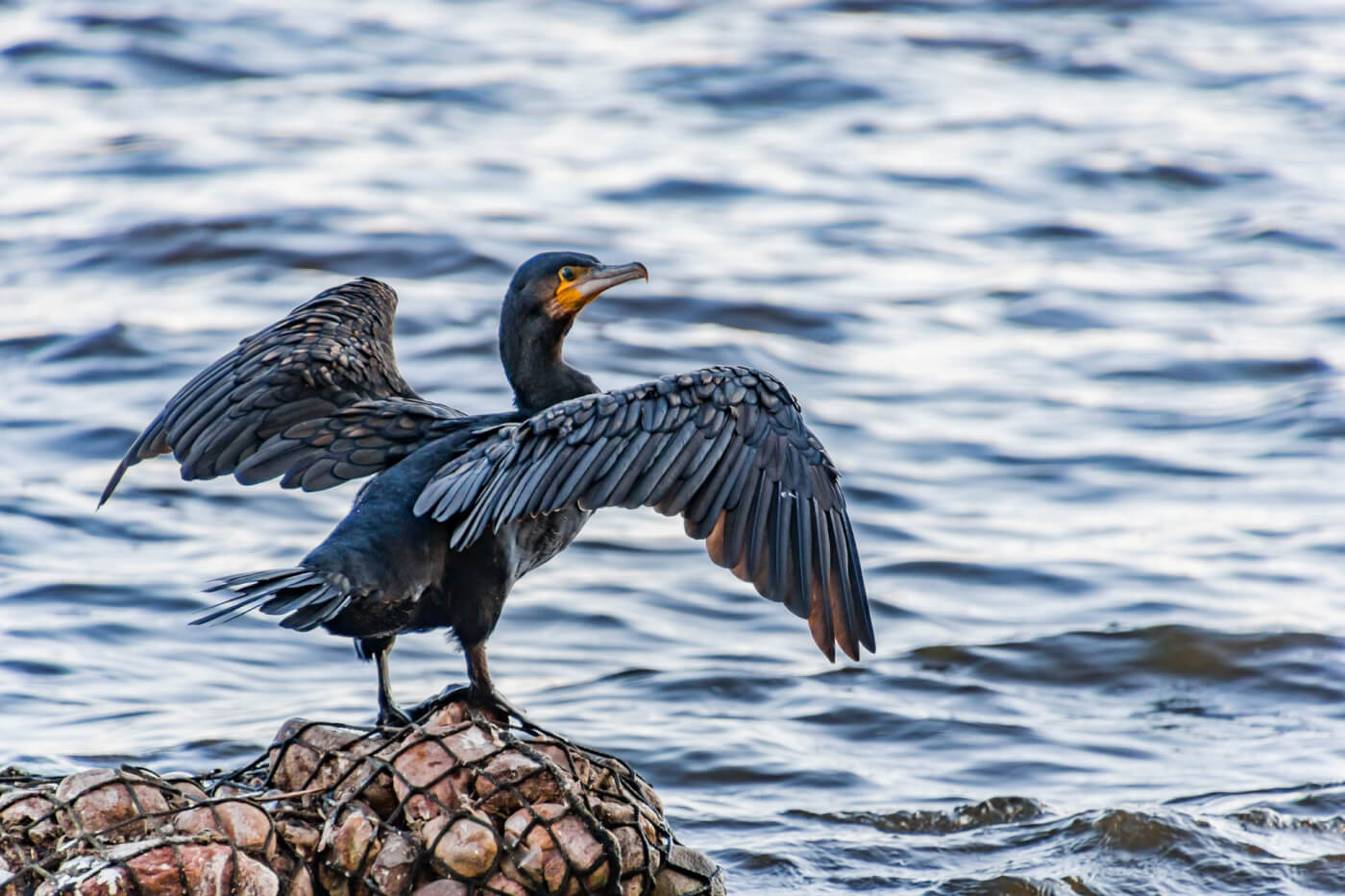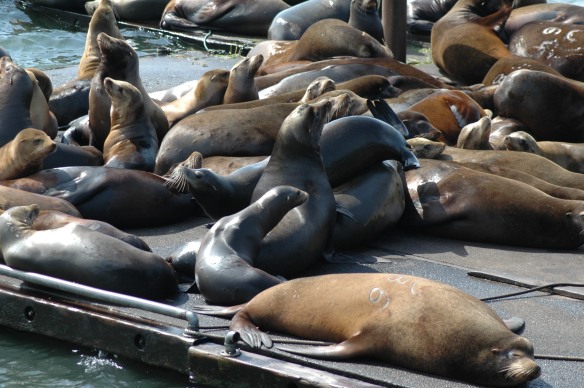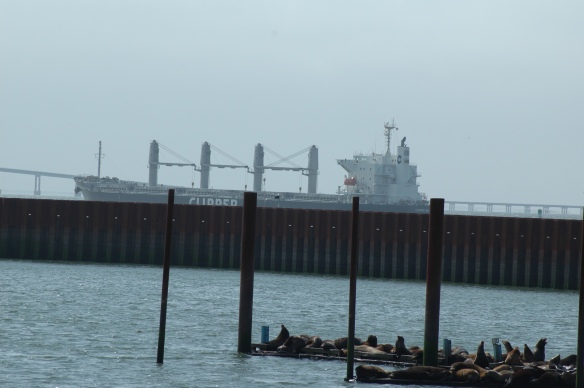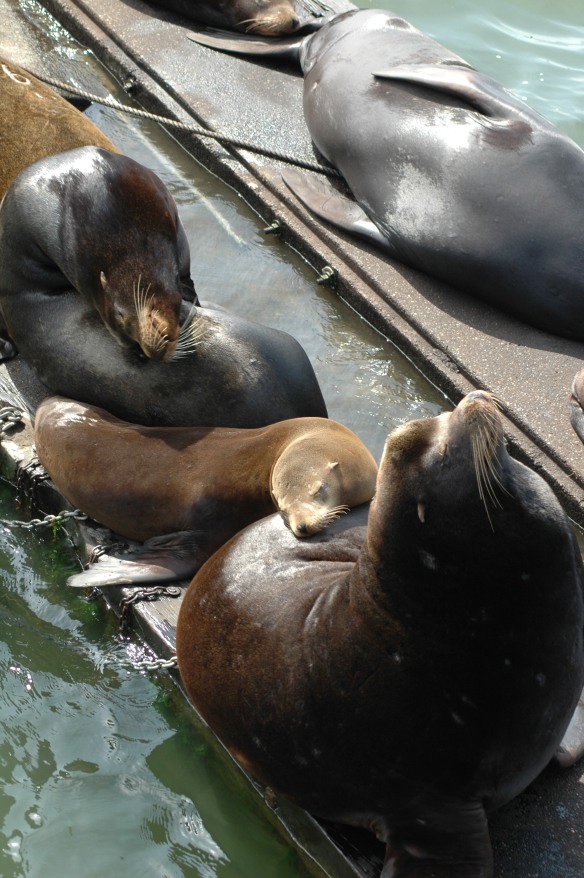
Danny Miller/The Daily Astorian
A lone cormorant takes flight under the Astoria Bridge.
The Astoria Bridge is experiencing a housing boom.
As many as 11,000 cormorants are roosting there at night, and observers have counted around 600 nests there within the past few weeks. Last year, there were only 400.
This surge in the bridge’s cormorant population comes a month after roughly 17,000 double-crested cormorants, for reasons still unknown, abandoned their nests and eggs on East Sand Island, located at the mouth of the Columbia River near Chinook, Washington.
“The bottom line is we believe most of the cormorants have remained in the estuary and the increased number of nests on the Astoria-Megler Bridge seems to indicate that,” said Diana Fredlund, a spokeswoman for the U.S. Army Corps of Engineers, which manages East Sand Island and the massive cormorant colony that used to nest there seasonally.
“But our observers are in the process of counting all the birds and nests in the estuary right now,” Fredlund added. “They can’t say definitively that they are from East Sand Island, but it seems likely.”
The bridge has hosted the fish-eating birds before, acting as a seasonal home to around 75 to 100 nesting pairs of cormorants on average, according to studies by the Corps — nothing compared to what has been observed in the past few weeks. It isn’t clear what the increase means for the bridge itself, or if the nests will remain in use after the regular nesting season has passed.
Meanwhile, the Oregon Department of Fish and Wildlife is continuing with regularly scheduled hazing of double-crested cormorants along Oregon estuaries to protect smolt.
The bulk of this work wrapped up in May, but Clatsop County’s Fisheries Project holds a permit from the state that allows them to also harass the birds in July, when the department typically releases fish from net pens in Youngs Bay and Tongue Point. With lower numbers of brood stock this year, however, Natural Resources Manager Steve Meschke doubts they’ll need to go out in their boats and chase cormorants around the bay — Clatsop County’s usual method.
Different methods, same birds
Oregon’s state-run hazing is very different from the methods undertaken by the Corps on East Sand Island.
Last year, the Corps obtained a permit from the U.S. Fish and Wildlife Service that allowed them to begin targeting and killing double-crested cormorants, planning to ultimately reduce approximately 14,900 breeding pairs of double-crested cormorants to 5,900 breeding pairs by 2018. The agency says the birds eat millions of protected salmon and steelhead traveling through the Columbia River estuary and threaten the survival of those runs, statements and reasoning the Portland Audubon Society and others have since challenged.
As of May 16, the Corps’ contractors killed 2,394 double-crested cormorants and oiled 1,092 nests to prevent eggs from hatching before all the birds disappeared and culling activities were halted early.
The goal for the Oregon Department of Fish and Wildlife hazing is similar, but different. Instead of using guns, the state and the other groups it contracts with or issues permits to for hazing work are more likely to chase the birds around in boats or use laser pointers to wake them up and move them away from areas where young fish are going to be passing through.
Their goal with this nonlethal hazing is to increase the survival of smolts, particularly the Oregon Coast coho population that is federally listed as threatened, by changing the cormorants’ behavior for a short period of time. The hazing occurs when the fish are passing through estuaries along the southern and mid-coast — Tillamook, Nehalem, Nestucca, Elsie and Coquille — and in the Lower Columbia River. Such hazing has regularly occurred since the 1980s.
Stresses on fish
Oregon Fish and Wildlife can’t say for certain that this hazing ultimately reduces the number of birds traveling to sensitive areas, or if keeping the birds away from smolts means more fish survive to come back as adults.
“The diet data indicates cormorants don’t really care what they eat, they eat what’s around and what’s easy to catch,” said James Lawonn, a biologist and avian predation coordinator for the department. As other prey begin to run through the rivers and up and down the coast after May, research by the department and Oregon State University show salmon make up even less of the birds’ diet.
Salmon survival depends on a variety of factors, including huge variables like ocean conditions and habitat loss, Lawonn said. Still, the state is trying to ease any additional stresses the fish may face.
This sort of nonlethal hazing will likely continue for the foreseeable future — the state’s particular hazing program is already in the budget for next year — but it is, Lawonn believes, ultimately a social question.
“How much does society want to harass a native bird to promote survival of salmon, some of which are in conservation danger, some of which aren’t?” he said.








